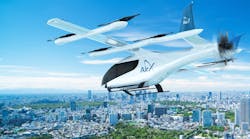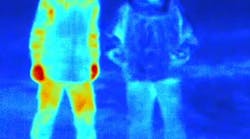By Courtney E. Howard
EL SEGUNDO, Calif.–Engineers at Raytheon Co. in El Segundo, Calif., are building a sensor that will harness the power of the Morphable Networked Micro-architecture (MONARCH) chip to detect underground threats like buried land mines and tunnels.
Raytheon won a $19 million contract in April from the Defense Advanced Research Projects Agency (DARPA) in Arlington, Va., to develop technology to locate land mines and tunnels as part of the Seismic and Acoustic Vibration Imaging (SAVi) program. “The goal of SAVi is to develop and demonstrate a mobile vibration imaging system that can conduct remote measurements of ground vibrations generated by active seismic or acoustic sources,” explains a DARPA Strategic Technology Office staffer.
SAVi calls for the development of not only a laser vibrometry system capable of fast, high-confidence target detection and discrimination in stationary and mobile operations, but also supporting components, such as focal plane arrays (FPAs), lasers, active seismic and acoustic excitation sources, and detailed data processing and throughput.
“This will provide the first capability of real-time acoustic and seismic detection on a mobile platform,” describes says Nick Uros, vice president of the Raytheon Space and Airborne Systems Advanced Concepts and Technology group. The Raytheon-built sensor will employ laser radar technology to locate hidden targets by measuring ground-surface vibrations. Algorithms situated on the chip will process measurements data to reveal the presence of near-surface tunnels and land mines under various environmental conditions and in the presence of clutter.
The system must be capable of processing massive amounts of data rapidly. As a result, Raytheon engineers selected the MONARCH, billed as the first computer to switch its architecture depending on the application. The architecture was designed by engineers at the University of Southern Calif. Information Sciences Institute (USC/ISI) and Raytheon Space and Airborne Systems. The chip, Uros says, “will ingest a vast amount of data from our sensor and process it with outstanding energy efficiency.”
“What we have been creating is essentially a supercomputer on a chip–a flexible supercomputer that reconfigures itself into the optimal supercomputer for each part of a multi-part task,” John Granacki, director at USC/ISI’s Advanced Systems Division, says.
The chip is designed to enable the replacement of several hardware devices in for mil-aero applications requiring reduced size, weight, and power. For more, visit Raytheon Co. online at www.raytheon.com.


